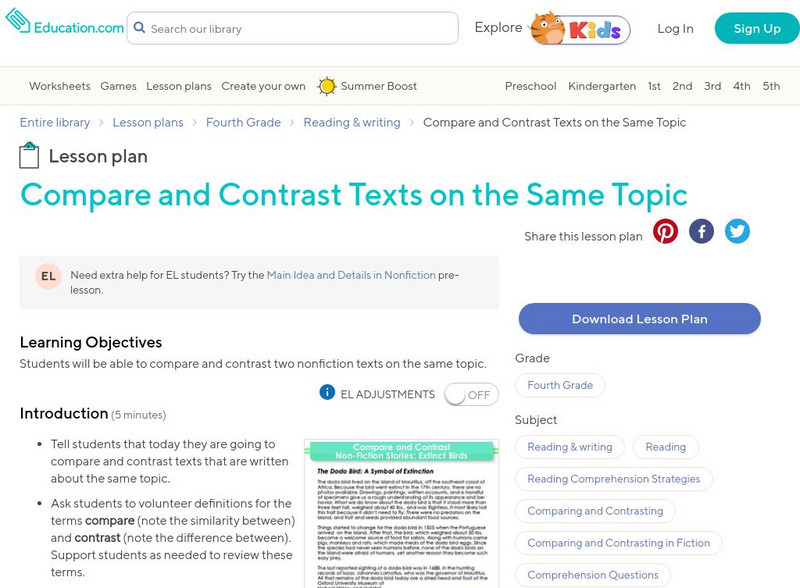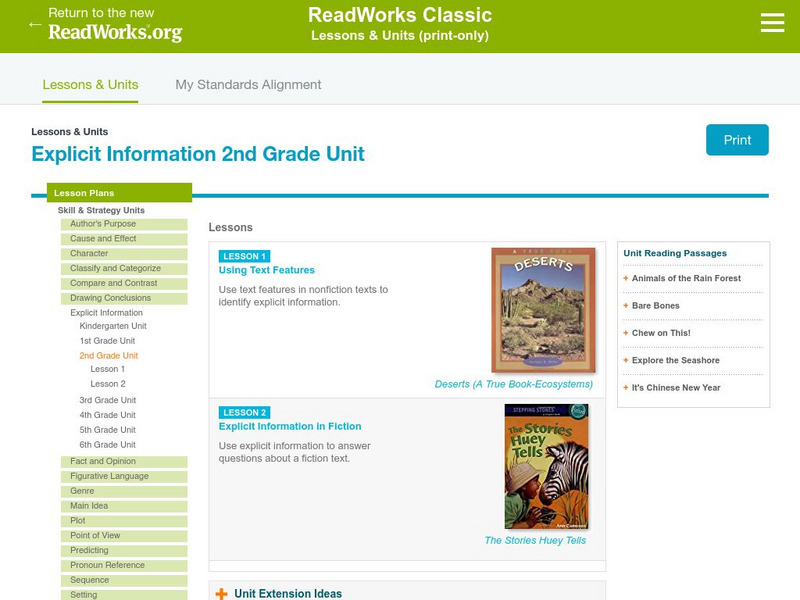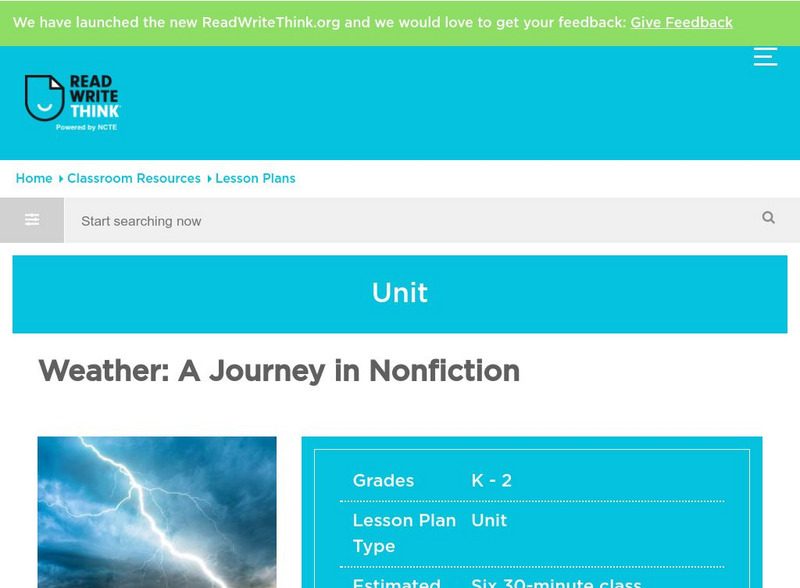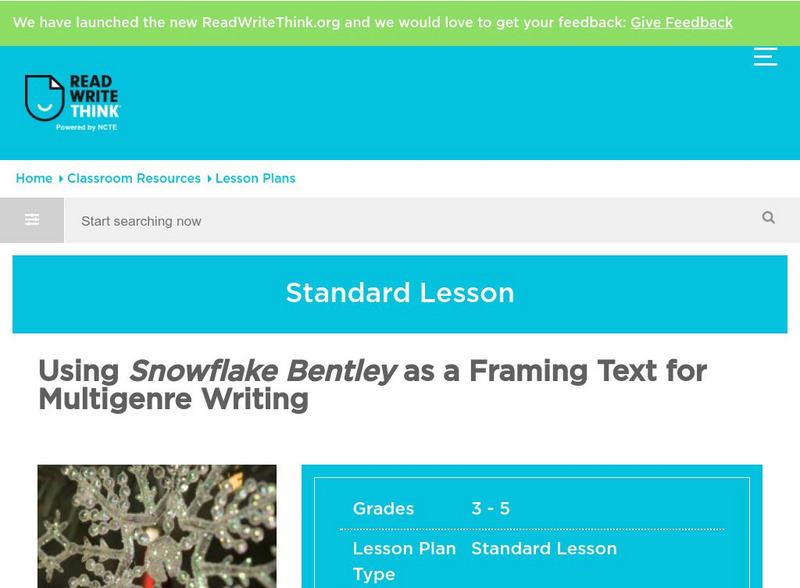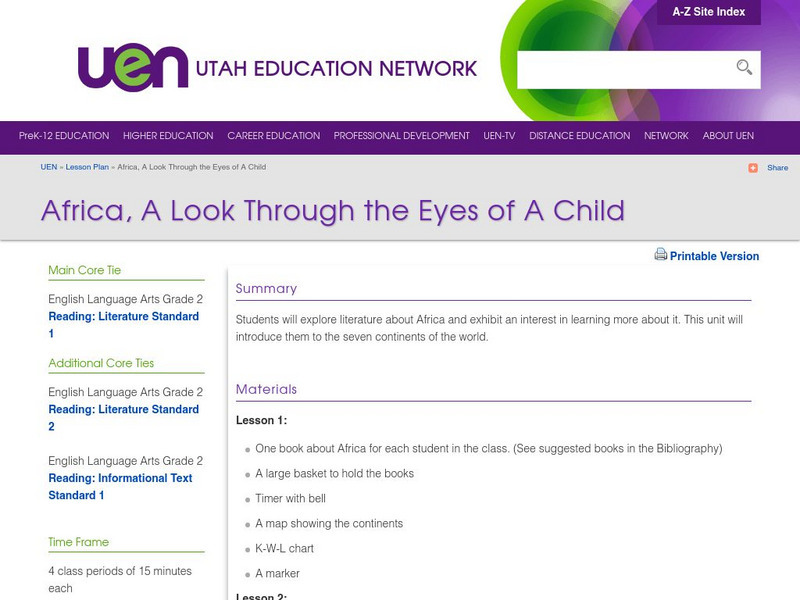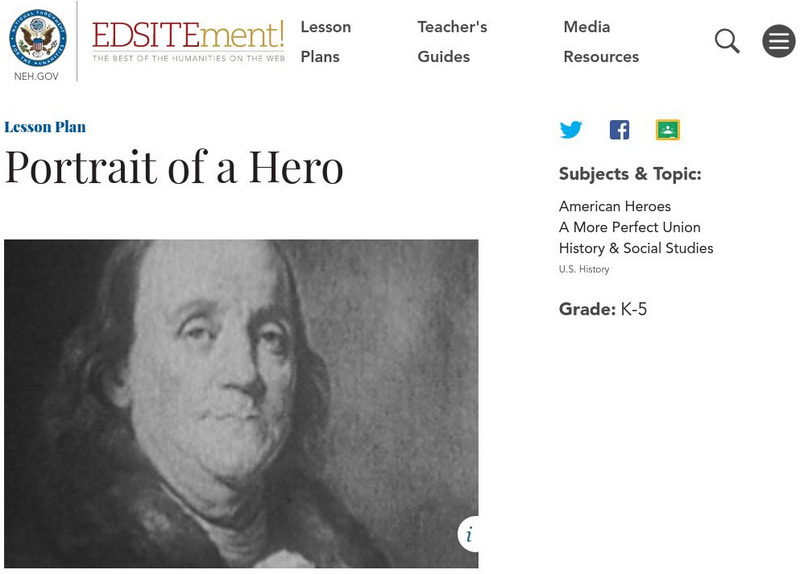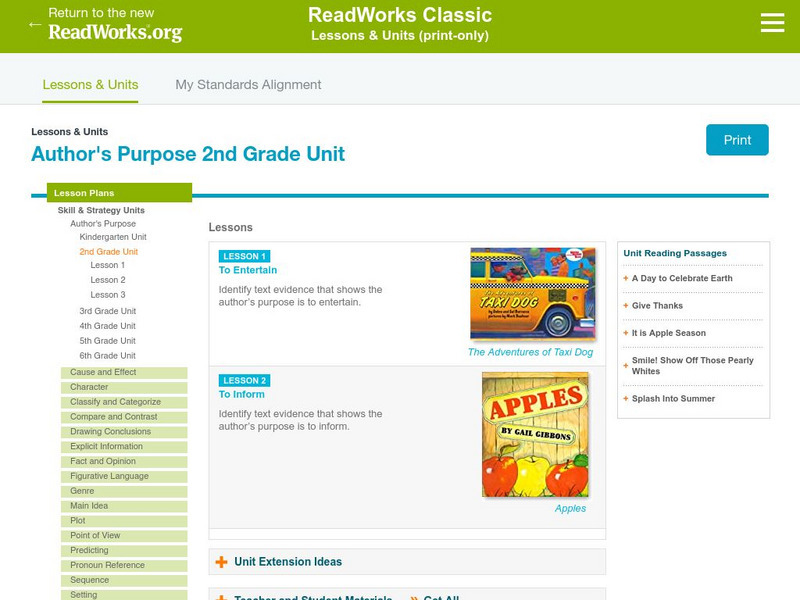Read Works
Read Works: 2nd Grade Lesson: Compare/contrast Genres
[Free Registration/Login Required] A lesson in which students use fiction and nonfiction books from a classroom library to identify the similarities and differences between fiction and nonfiction and to create a Venn diagram...
ReadWriteThink
Read Write Think: Using Comprehension Strategies With Elie Wiesel's Night
Working in small groups, students read and discuss Elie Wiesel's memoir Night and then take turns assuming the "teacher" role, as the class works with four different comprehension strategies.RI.11-12.4 Word meaning, RI.11-12.10b Text...
Better Lesson
Better Lesson: Unit: Reading Comprehension and Structure
This unit focuses on reading comprehension and structure. It includes lessons on the main idea and supporting details, theme, sequence, fact and opinion, literary devices, character, text features, inferences, organization of nonfiction,...
ReadWriteThink
Read Write Think: History Comes Alive: Developing Fluency and Comprehension
Let the power of imagination and inference serve as a "time machine" to bring Benjamin Franklin into the classroom! History and science come to life in a dialogue with Franklin the inventor, developed through lesson activities that...
Read Works
Read Works: Genre 2nd Grade Unit: Encyclopedias
[Free Registration/Login Required] A lesson in which students use the book Children's Illustrated Encyclopedia edited by Jayne Parsons to learn to locate information and find facts about a subject in an encyclopedia. Lesson includes...
ReadWriteThink
Read Write Think: Text Features: Non Fiction [Pdf]
Compare the printed page to an electronic web page and use this activity to discuss the similarities and differences. A cross-curricular tie-in with ecosystems. Could easily be adapted to another subject area.
Education.com
Education.com: Compare and Contrast Texts on the Same Topic
[Free Registration/Login Required] Explain that even if two texts are written about the same topic, they can have different information depending on the author's perspective or the source of the information. When we compare two texts on...
Utah Education Network
Uen: Setting a Purpose for Reading Using Informational Text
This instructional activity engages students in using a two-column graphic organizer to take notes. Students will record titles and subtitles and list questions that will correspond with each one.
Read Works
Read Works: Grade 2: Two Lesson Unit: Explicit Information
[Free Registration/Login Required] Designed to teach students to identify explicit information in nonfiction and fiction texts. Lessons are based on the books Deserts (A True Book-Ecosystems) by Darlene R. Stille and The Stories Huey...
ReadWriteThink
Read Write Think: Weather: A Journey in Nonfiction
Questions about weather clear up when students use what they learned from their books to create a presentation to share with the rest of the class.
Utah Education Network
Uen: Enlightening Explorations, Part Iii
This instructional activity contains the following labs: Rainbows, Refraction with Prisms, and What Color Is It? Students will study light by reading various nonfiction texts and viewing a video instructional activity. Then students will...
ReadWriteThink
Read Write Think: Using Snowflake Bentley as a Framing Text for Multigenre Writing
Using Snowflake Bentley as a model, students create a working definition of multigenre text and then use that definition to create their own multigenre piece about winter or another theme.
Utah Education Network
Uen: The Good, the Bad, and the Both
After exposures to assorted forms of informational text and media, Istudents will identify positive and negative effects of microorganisms. Students will explore how some micooorganisms have overcome their negative attributes while...
Utah Education Network
Uen: Africa, a Look Through the Eyes of a Child
As an introduction to the seven continents unit, 2nd graders will read and explore assorted informational texts about Africa. Students will answer the following questions to acquire knowledge about the continent: Who? What? Where? Why?...
National Endowment for the Humanities
Neh: Edsit Ement:portrait of a Hero
Discussing real life heroes and heroines and viewing their pictures will help students learn about reading and writing biographies. A writing rubric assessment is included in this series of activities designed to teach about heroes and...
Read Works
Read Works: Grade 2: Three Lesson Unit: Author's Purpose
[Free Registration/Login Required] A series of three lesson plans designed to teach learners to identify author's purpose including to entertain, to inform, and to persuade. Lessons are based on the books The Adventures of Taxi Dog by...
CommonLit
Common Lit: Units: 7th Grade Thematic Unit: Heroes
Complete teaching unit for 7th Grade Thematic Unit: "Heroes." In this unit, 7th graders will read seven texts that explore why people act heroically. Throughout this unit, students will revisit the essential question: "Why do people act...
Writing Fix
Writing Fix: Snowball Note Making and Summarizing
In this lesson, students will engage in this post-reading strategy for a nonfiction or a fiction piece. Each student will take notes on a four-square square graphic organizer about something they already knew, something they found...
Better Lesson
Better Lesson: Shadows Shadows Everywhere!
Shadows are all around us.Students will use reading comprehension strategies to distinguish between fantasy and reality.
Louisiana Department of Education
Louisiana Doe: Louisiana Believes: English Language Arts: Grade 3: Because of Winn Dixie
Third graders learn about the value of companionship, the joy of finding friends in unexpected places, and the significance of building a community of different perspectives. They explore how authors develop the reader's understanding of...
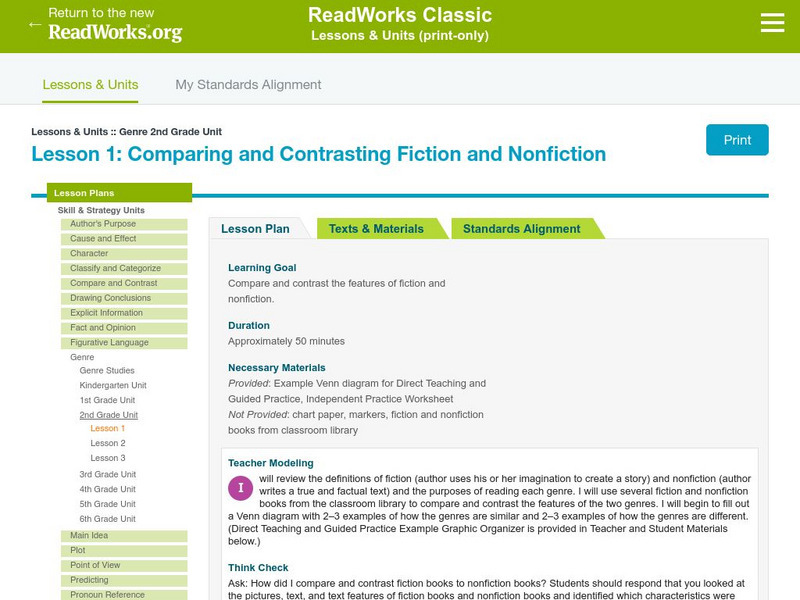

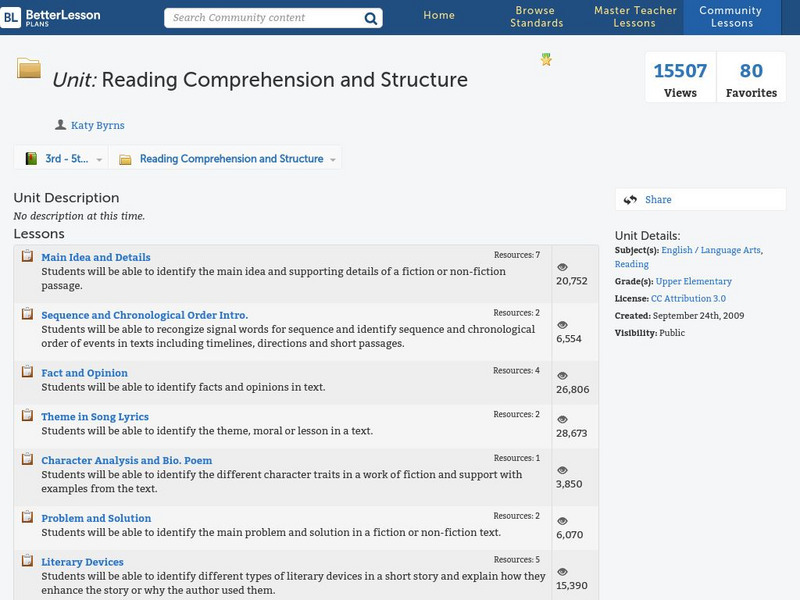
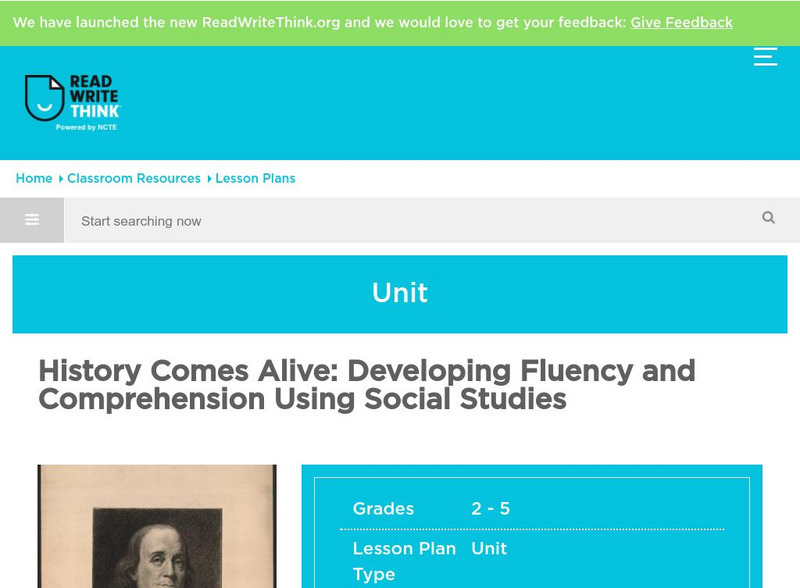
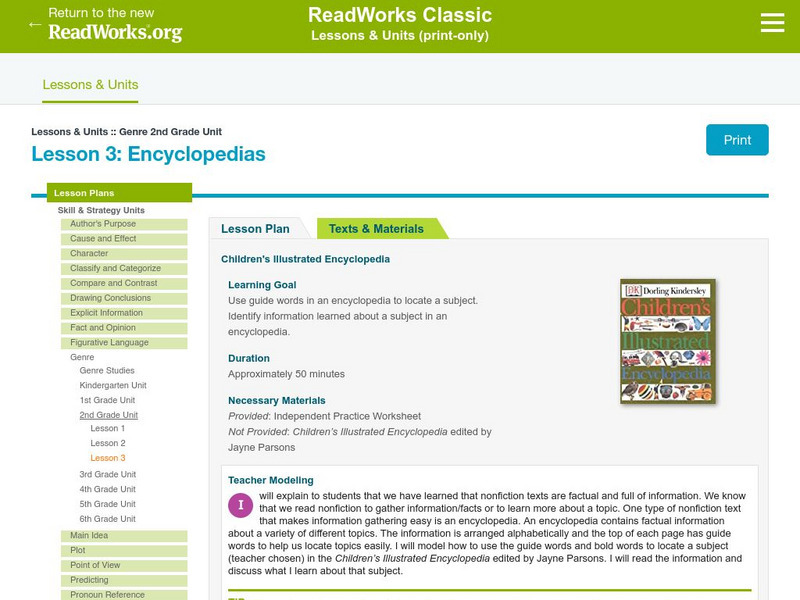
![Read Write Think: Text Features: Non Fiction [Pdf] Lesson Plan Read Write Think: Text Features: Non Fiction [Pdf] Lesson Plan](https://d15y2dacu3jp90.cloudfront.net/images/attachment_defaults/resource/large/FPO-knovation.png)
